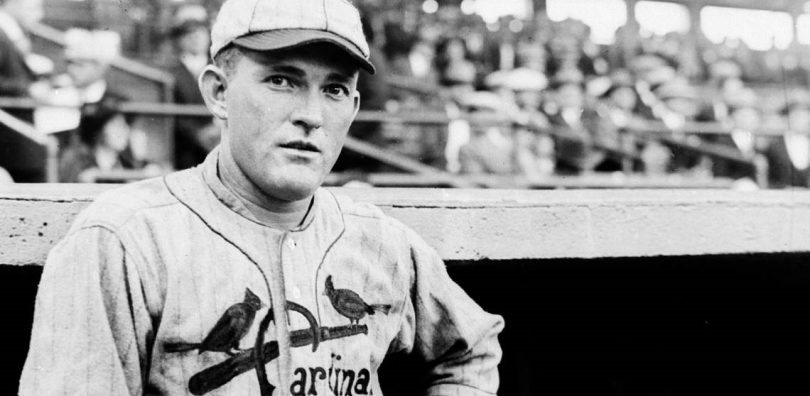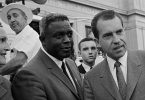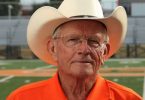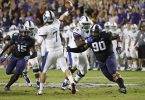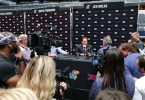Later this year will mark 100 years since Yankees owner Jacob Ruppert, the beer magnate drunk with baseball ambition, pulled out $125,000 from his bank vault to buy Babe Ruth from the Red Sox and change the course of history.
The sum was $70,000 more than the record Cleveland shelled out three years earlier to acquire Tris Speaker, whose professional rise began at Fort Worth’s Texas Wesleyan in Polytechnic Heights.
“We do not care what he thinks of it,” Ruppert said of American League president Bam Johnson. “All I can say is whether Mr. Johnson likes it or not, Babe Ruth will be in our opening lineup.”
That play was cause for concern among the baseball minds across town at the Polo Grounds. New York Giants owner Charles Stoneham eyed a counter attraction and identified their man.
Stoneham and the Giants offered $250,000 to St. Louis for Rogers Hornsby, then a 23-year-old, who only five or six years earlier was working 12-hour days delivering milk in Fort Worth for a grand total of $60 a month.
The temptation, said Branch Rickey, then St. Louis’ president, was about more than the Cardinals could stand. The franchise was broke, “with hardly enough money that winter to meet spring training expenses,” Rickey said.
“But just as we were about to close the deal it suddenly occurred to me that if a player like Hornsby, who cost us practically nothing, could command such a high price, why not go about developing more Hornsbys,” Rickey said. “So, since there was nothing in the rules prohibiting a major-league club from buying minor league clubs, [owner Sam] Breadon and I set about building the farm system.”
Unlike the Red Sox and Ruth, St. Louis turned down the Giants, but the minor-league farm system was born.
Tuesday’s All-Star Game, baseball’s annual gala showing off its most prized players, is a celebration of the national pastime.
Sadly, and even with all the imperfections, Hornsby, a Hall of Fame player and personality, is largely forgotten in his adopted hometown of Fort Worth, where he moved with his widowed mother, brothers and sister at age 6 in or around 1902.
She came because the packing plants in the Stockyards offered opportunities for employment.
There is nothing here to commemorate where one of sports’ best professional careers all started. We rightly celebrate the career of Ben Hogan. Hogan’s identity was Fort Worth. He lived here, he opened a business here.
He essentially had a public relations office in town molding his legacy.
Hornsby wasn’t as synonymous with the city, though he owned property in the city’s central business district, as well as in a residential neighborhood. At one time, he also had more than 700 acres in West Texas.
Nonetheless, Hornsby, likewise, one of his game’s transformational performers, deserves more.
The two shared many similarities, their interiors and exteriors in some ways were identical. As was their unquestioned greatness.
Hornsby never played in an All-Star Game, his decline as a player and of his body almost complete by the time of the first game in 1933. Yet, today his status as one of the game’s greats remains firm. Hornsby exited the stage with a career .358 batting average, second all-time only to Ty Cobb. Beginning in 1920, he won six consecutive National League batting titles, including the modern single-season record of .424 in 1924. He won a seventh in 1928.
During a five-year span, he hit .402. Twice he was selected the league’s most valuable player.
He wouldn’t go see movies, fearful that it might impair his batting eye. He had no such concerns over the fine print of a horse racing form, which he obsessed over and played incessantly as a compulsive gambler, which caused him grief in unwanted scrutiny, particularly in the aftermath of 1919’s Black Sox scandal, and financial problems.
The St. Louis Browns fired him as player-manager in 1937 over his unquenchable thirst for waging on horses.
“I’ll tell you what kind of credit he had,” said one local gambler. “He was on a tab for $100,000 with Frankie Moore in Cincinnati. Had a telephone right in the St. Louis dugout to call in his bets.”
He didn’t think it was anybody’s business how he spent his money. Some guys did liquor and the clubs, he said.
“I didn’t.”
Rogers – in his early days, he went by “Dick,” his belief that Rogers, his mother’s maiden name, was effeminate – unlike Hogan, neither smoked nor drank, ideal for the era of Prohibition. His only other vice was ice cream.
His reputation for being salty, gruff and taciturn, as well as distant and difficult, was well-earned but came easy to him. Like Hogan.
It was the cause of wearing out his welcome in St. Louis, the Giants — he eventually did wind up there, nine years later, and for just one season, but only after leading the Cardinals to the World Series in 1926 as player-manager — the Boston Braves, Cubs and St. Louis Browns.
As general manager of the Fort Worth Cats in the early 1940s, Hornsby’s team lost a 15-inning game. The Cats couldn’t score with a runner on second and no outs in every inning between the ninth and the last. Never did Hornsby try to advance a runner to third with a sacrifice bunt.
Why, he was asked?
“If the ——— ——– can’t hit, they don’t deserve to win.”
The reader was left to literally read between the lines, though “sons-of-bitches” was a favorite phrase of his.
Hornsby, in trouble financially at the time in 1943 when the Texas League was shut down because of World War II, flatly turned down an offer of $1,000 to endorse a cigarette brand.
“Why?” he was asked.
“Because I don’t smoke.”
“Oh, that doesn’t make any difference.”
“It does to me. Goodbye.”
He was the most outspoken among Texas League general managers about the league continuing to play, charging that the owners of the six other clubs, who claimed to be shutting down because of a manpower issue, didn’t want to play because of money. Hornsby insisted that communities in the Texas League needed baseball as a diversion during the war.
“Now is the time for baseball men to take their eyes off the dollar sign and demonstrate that they really believe in the merits of the game,” he said. “Baseball has no more of a manpower problem than any other business. Walk down the street and you’ll see every business battling against a shortage of workers, but they are keeping open – and serving a good purpose.”
He and Jerry Jones would have never made it together. He might have killed George Steinbrenner. As a manager, Hornsby hated nosey, meddling owners.
“If you don’t like the way I’m managing your club, pay me off and get somebody else. But don’t try to tell me how to manage a ballclub because you don’t know the first thing about it. Why is it that when a man has the capital to buy a ballclub he suddenly knows all the answers on how the game should be played. Would you try to tell a stockbroker or a shoe manufacture how to run his business?”
Hornsby couldn’t have been much older than 13 when his baseball career started, not with his North Side High School contemporaries, but with the Armour team, as in the company in the Stockyards, in the Star-Telegram City League in 1909.
He worked in the office at Armour as a clerk of some kind that summer and played on the company team as the shortstop, James Record, the paper’s sports editor at the time and president of the league remembered decades later.
Believe it or not, he wasn’t naturally gifted, but he loved the game and had a determination. Like Hogan.
Considered one of the best, if not the best, right-handed hitter in baseball history, the slight Hornsby was a Mendoza-liner in those days long before anybody had heard of Mario Mendoza.
“Rogers always had his baseball glove with him,” recalled Rosco Minton, Hornsby’s North Side peer and later a politician in Tarrant County. “He was ready to play catch with anybody, anytime.
“He was a terrible hitter then. He crouched over the ball, choked up on the bat. I don’t think he hit .200. The next time we saw him, he had adopted that smooth swing and style, which made him a great hitter.”
At 15, according to Rogers Hornsby, a biography, he was playing in an adult league in Fort Worth and a semipro league in Granbury. He made $2 a game, plus room and board and rail fare.
His inability as a hitter cost him a chance with the Cats.
“In 1914, Hornsby was playing in the four-team Major City League,” said A.M. Keisker, who had succeeded Record as sports editor. “I thought the boy had potential and had been talking myself blue in the face about him to Paul LaGrave and Walter Morris of the Cats. Finally, a date was set for them to look him over. Neither he nor anyone else was to know of their interest.
“In the final inning, with the score tied and Hornsby coming to bat, manager Sony Rogers of the Armour team sent in a pinch-hitter.”
Naturally, that convinced LaGrave and Morris that Hornsby wasn’t much of a hitter.
As it turned out, the Cats wouldn’t have had him for very long.
Hornsby instead got a contract in Dallas, his older brother Everett, who played there, making an assist. He was released two weeks later but earned a place on the Texas-Oklahoma League’s Hugo-Denison club. He played his first professional baseball with Denison in 1914.
The Cardinals discovered him the very next year. Denison sold his contract to St. Louis for $600, or roughly $249,400 less than what the Giants offered less than five years later.
In 1916, up 35 pounds after an off-season on his uncle’s farm and now swinging a good bat, St. Louis made him a regular.
Rickey, the man who integrated baseball, joined the Cardinals in 1919, perhaps the most consequential year in the history of baseball.
He knew a rare baseball future when he saw one.

